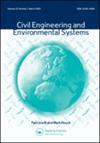系统性失误是新加坡建筑行业事故的主要原因
IF 1.1
3区 工程技术
Q3 ENGINEERING, CIVIL
引用次数: 7
摘要
新加坡建筑行业的工作场所事故继续在职业死亡中占主导地位。为了提高企业的整体安全绩效,评估和消除此类事件的根本原因至关重要。本研究旨在找出并评估造成建筑行业意外的主要原因,即系统性疏失。该研究引入了政策、过程、人员和激励因素的框架,结合系统理论事故模型和过程(STAMP)模型,以更全面地了解导致建筑事故升级的因素。对31家应答公司进行了一项调查问卷,调查内容涉及与框架相关的因素的感知重要性和采用程度。调查结果显示,与安全相关的实践相比,采用率总体上低于其感知的重要性水平。特别强调人员和激励因素在采用程度和重要性方面具有显著差异。然而,人员和激励因素不应与政策和过程因素隔离开来,因为需要采取综合方法来提高企业的整体安全绩效。本文章由计算机程序翻译,如有差异,请以英文原文为准。
Systemic lapses as the main causes of accidents in the Singapore construction industry
ABSTRACT The workplace accidents in Singapore’s construction sector continue to dominate among occupational fatalities. In order to improve the overall safety performance of firms, it is critical to evaluate and eliminate the root causes of such incidents. This study aims to identify and assess the systemic lapses as the main causes of accidents in the construction industry. The study introduces a framework of Policy, Process, People, and Incentive factors, coupled with the Systems Theoretic Accident Model and Processes (STAMP) model to demonstrate a more comprehensive understanding of the contributing factors that escalate to construction accidents. A survey questionnaire with 31 respondent firms was conducted regarding the perceived importance of, and level of adoption of, factors that were associated with the framework. The findings revealed that, with regards to the safety-related practices, there is an overall lower adoption rate in comparison to their perceived level of importance. In particular, people and incentive factors are highlighted as having a significant difference in terms of the extent of adoption and level of importance. However, the people and incentive factors should not be isolated from the policy and process factors, as a comprehensive approach is needed to improve the overall safety performance of firms.
求助全文
通过发布文献求助,成功后即可免费获取论文全文。
去求助
来源期刊

Civil Engineering and Environmental Systems
工程技术-工程:土木
CiteScore
3.30
自引率
16.70%
发文量
10
审稿时长
>12 weeks
期刊介绍:
Civil Engineering and Environmental Systems is devoted to the advancement of systems thinking and systems techniques throughout systems engineering, environmental engineering decision-making, and engineering management. We do this by publishing the practical applications and developments of "hard" and "soft" systems techniques and thinking.
Submissions that allow for better analysis of civil engineering and environmental systems might look at:
-Civil Engineering optimization
-Risk assessment in engineering
-Civil engineering decision analysis
-System identification in engineering
-Civil engineering numerical simulation
-Uncertainty modelling in engineering
-Qualitative modelling of complex engineering systems
 求助内容:
求助内容: 应助结果提醒方式:
应助结果提醒方式:


